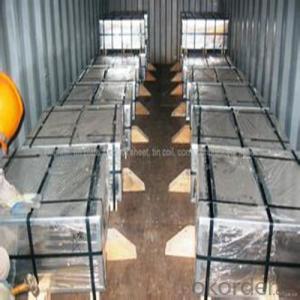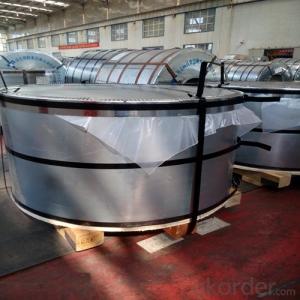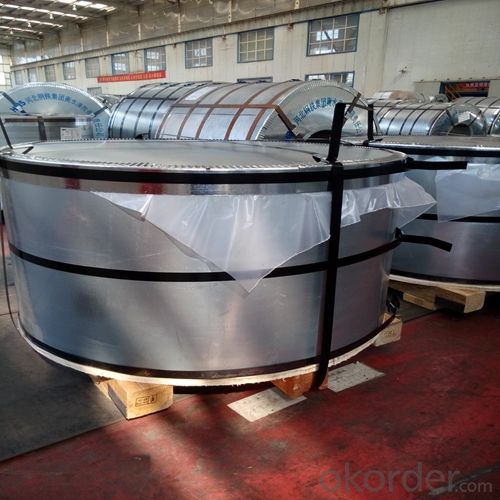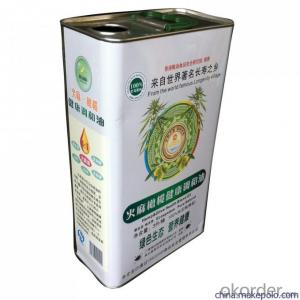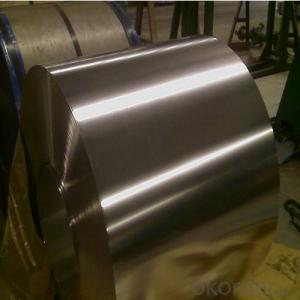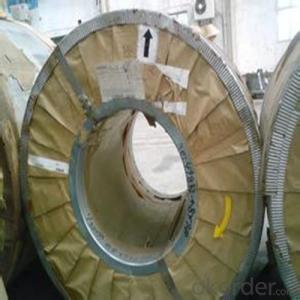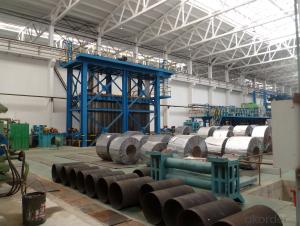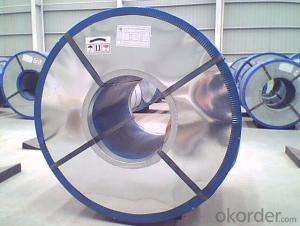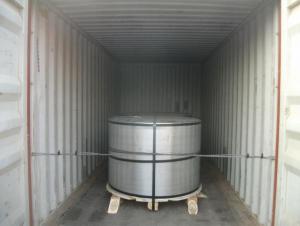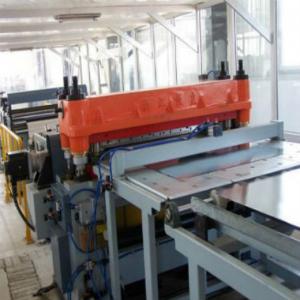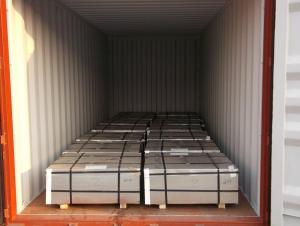Electrolytic Tinplate of Prime Quality for Chemical Industrial Cans Use
- Loading Port:
- Qingdao
- Payment Terms:
- TT OR LC
- Min Order Qty:
- 50 m.t.
- Supply Capability:
- 30000 m.t./month
OKorder Service Pledge
OKorder Financial Service
You Might Also Like
1.Structure of Electrolytic Tinplate of Prime Quality for Chemical Industrial Cans Use
Electrolytic Tinplate is a thin steel sheet coated by tin. It has an extremely beautiful metallic luster as well as excellent properties in corrosion resistance, solder ability, and weld ability.
2.Main Features of the Electrolytic Tinplate of Prime Quality for Chemical Industrial Cans Use
Appearance – Tinplate is characterized by its beautiful metallic luster. Products with various kinds of surface roughness are produced by selecting the surface finish of the substrate steel sheet.
Paintability and printability – Tinplates have excellent paintability and printability. Printing is beautifully finished using various lacquers and inks.
Formability and strength – Tinplates have got very good formability and strength. By selecting a proper temper grade, appropriate formability is obtained for different applications as well as the required strength after forming.
Corrosion resistance – Tinplate has got good corrosion resistance. By selecting a proper coating weight, appropriate corrosion resistance is obtained against container contents. Coated items should meet 24 hour 5 % salt spray requirement.
Solderability and weldability – Tinplates can be joined both by soldering or welding. These properties of tinplate are used for making various types of cans.
Hygienic – Tin coating provides good and non toxic barrier properties to protect food products from impurities, bacteria, moisture, light and odours.
Safe – Tinplate being low weight and high strength makes food cans easy to ship and transport.
Eco friendly – Tinplate offers 100 % recyclability.
Tin is not good for low temperature applications since it changes structure and loses adhesion when exposed to temperatures below – 40 deg C.
3. Electrolytic Tinplate of Prime Quality for Chemical Industrial Cans Use Images
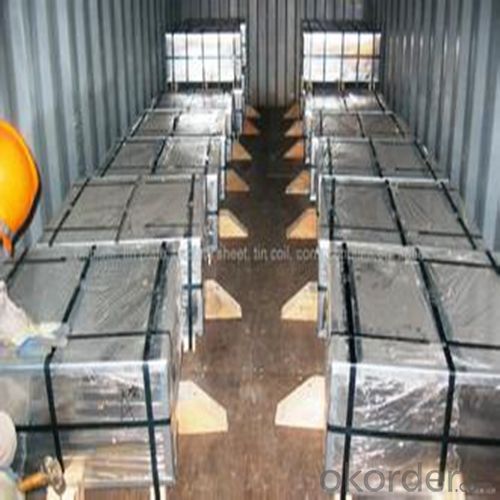
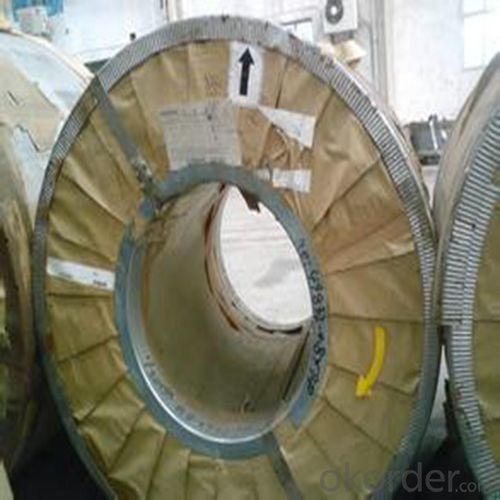
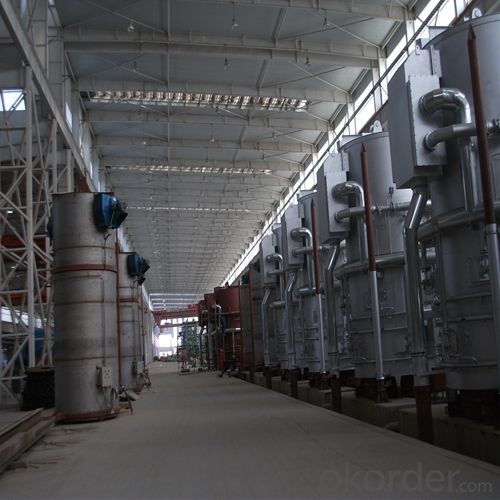
4.Electrolytic Tinplate of Prime Quality for Chemical Industrial Cans Use Specification
Standard: ISO 11949 -1995
Material: MR
Thickness:0.34mm
Width: 600mm
Temper: T3
Annealing: BA
Coil Inner Diameter: 508mm
Weight: 6-10 tons/coil 1~1.7 tons/sheets bundle
Passivation:311
Oil: DOS
Surface: Finish
5.FAQ of Electrolytic Tinplate of Prime Quality for Chemical Industrial Cans Use
- How are the tinplates specified?
The tinplates are specified as per the steel base, extent of tempering, the coating weight, annealing method and the surface finish.
- How many types there are for base steels?
The base steels are of three types: Type MR, L, D
- Q: What are the different types of tinplate lamination?
- There are primarily two types of tinplate lamination: single reduced (SR) and double reduced (DR). In single reduced tinplate lamination, the steel base undergoes a single reduction process, resulting in a thinner tin coating. On the other hand, double reduced tinplate lamination involves two reduction processes, yielding a thinner and more uniform tin coating.
- Q: Can tinplate be customized with embossing or debossing?
- Yes, tinplate can be customized with embossing or debossing techniques to create raised or recessed designs on its surface.
- Q: What are the main competitors of tinplate in the packaging industry?
- The main competitors of tinplate in the packaging industry include aluminum, plastic, and glass.
- Q: Can tinplate be used for chemical storage containers?
- Yes, tinplate can be used for chemical storage containers. Tinplate is a type of steel coated with a thin layer of tin, which provides excellent corrosion resistance. This makes it suitable for storing various chemicals as it helps to prevent chemical reactions and preserve the integrity of the container.
- Q: Can tinplate be used for beverage cans?
- Yes, tinplate can be used for beverage cans. Tinplate is commonly used as a coating for steel cans, providing them with corrosion resistance and a shiny appearance.
- Q: Are there any specific regulations for tinplate in different countries?
- Yes, there are specific regulations for tinplate in different countries. These regulations typically cover aspects such as the composition and quality standards of tinplate, labeling requirements, and safety guidelines for its production, use, and disposal. Each country may have its own set of regulations or may adopt international standards for tinplate. It is important for manufacturers and importers to comply with these regulations to ensure the safety and quality of tinplate products in the respective countries.
- Q: How does tinplate contribute to the efficiency of energy systems?
- Tinplate contributes to the efficiency of energy systems by providing a highly durable and corrosion-resistant material for the production of energy-efficient appliances, such as refrigerators and air conditioners. Its excellent thermal conductivity properties also aid in the efficient transfer of heat, reducing energy waste. Additionally, tinplate is widely used in the packaging of food and beverages, helping to preserve products and extend their shelf life, thus reducing food waste and energy consumption associated with production and transportation.
- Q: What are the health and safety concerns associated with tinplate?
- Some health and safety concerns associated with tinplate include potential exposure to tin, which can cause respiratory issues and skin irritation if inhaled or in contact with the skin for prolonged periods. Additionally, the coatings used on tinplate may contain harmful chemicals like bisphenol A (BPA), which has been linked to various health problems. It is important to handle and use tinplate products with caution, ensuring adequate ventilation and avoiding direct contact with the coating.
- Q: How big is the difference between tinplate and stainless steel 316L?
- It will be the steel strength and formability and corrosion resistance of tin soldering, and beautiful appearance with a material, corrosion resistant, non-toxic, high strength and good ductility properties.
- Q: How does tinplate perform in terms of corrosion resistance?
- Tinplate performs exceptionally well in terms of corrosion resistance due to the presence of a thin layer of tin on its surface. This tin coating acts as a barrier, protecting the underlying steel from corrosion, making tinplate highly resistant to rust and other forms of corrosion.
Send your message to us
Electrolytic Tinplate of Prime Quality for Chemical Industrial Cans Use
- Loading Port:
- Qingdao
- Payment Terms:
- TT OR LC
- Min Order Qty:
- 50 m.t.
- Supply Capability:
- 30000 m.t./month
OKorder Service Pledge
OKorder Financial Service
Similar products
Hot products
Hot Searches
Related keywords
